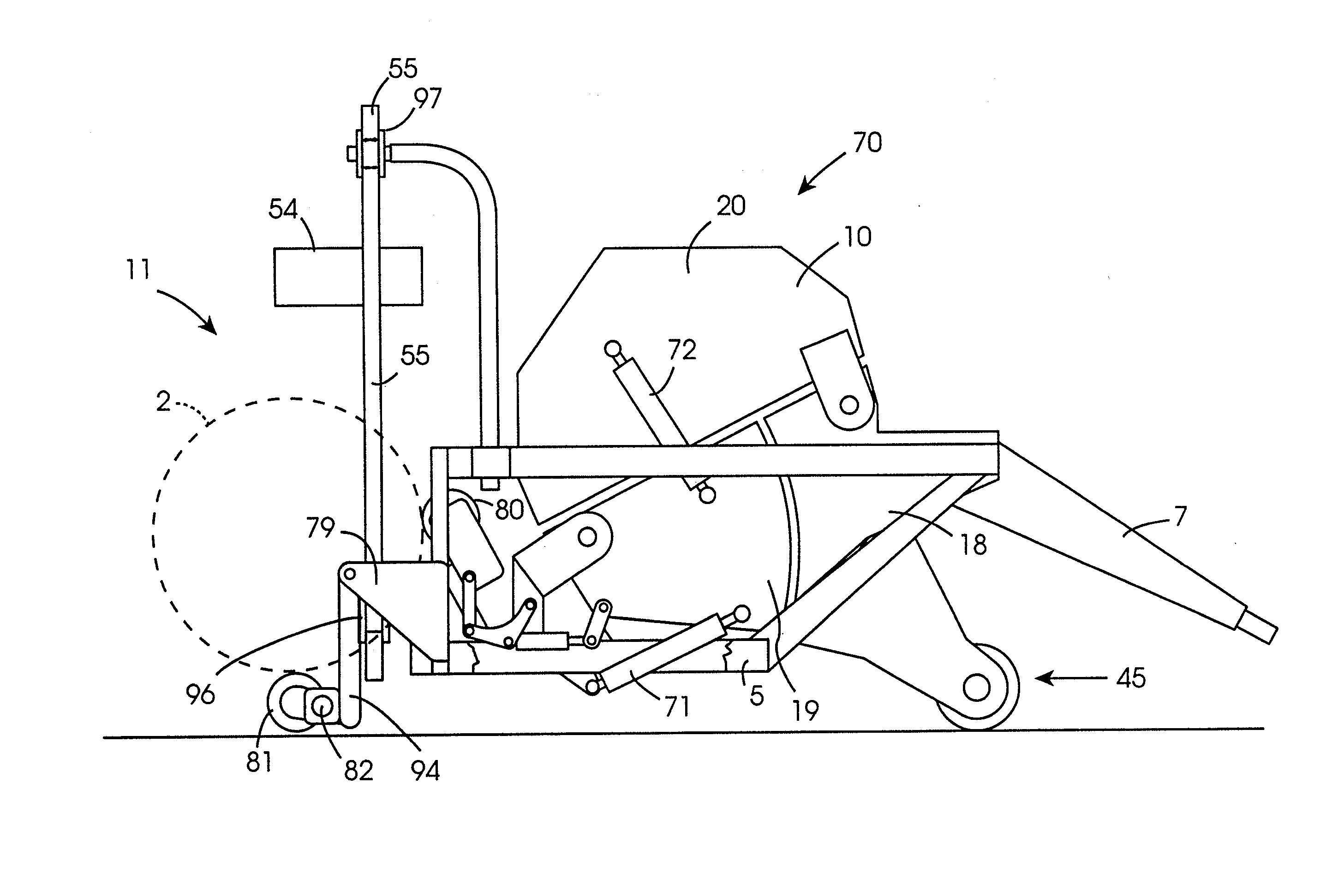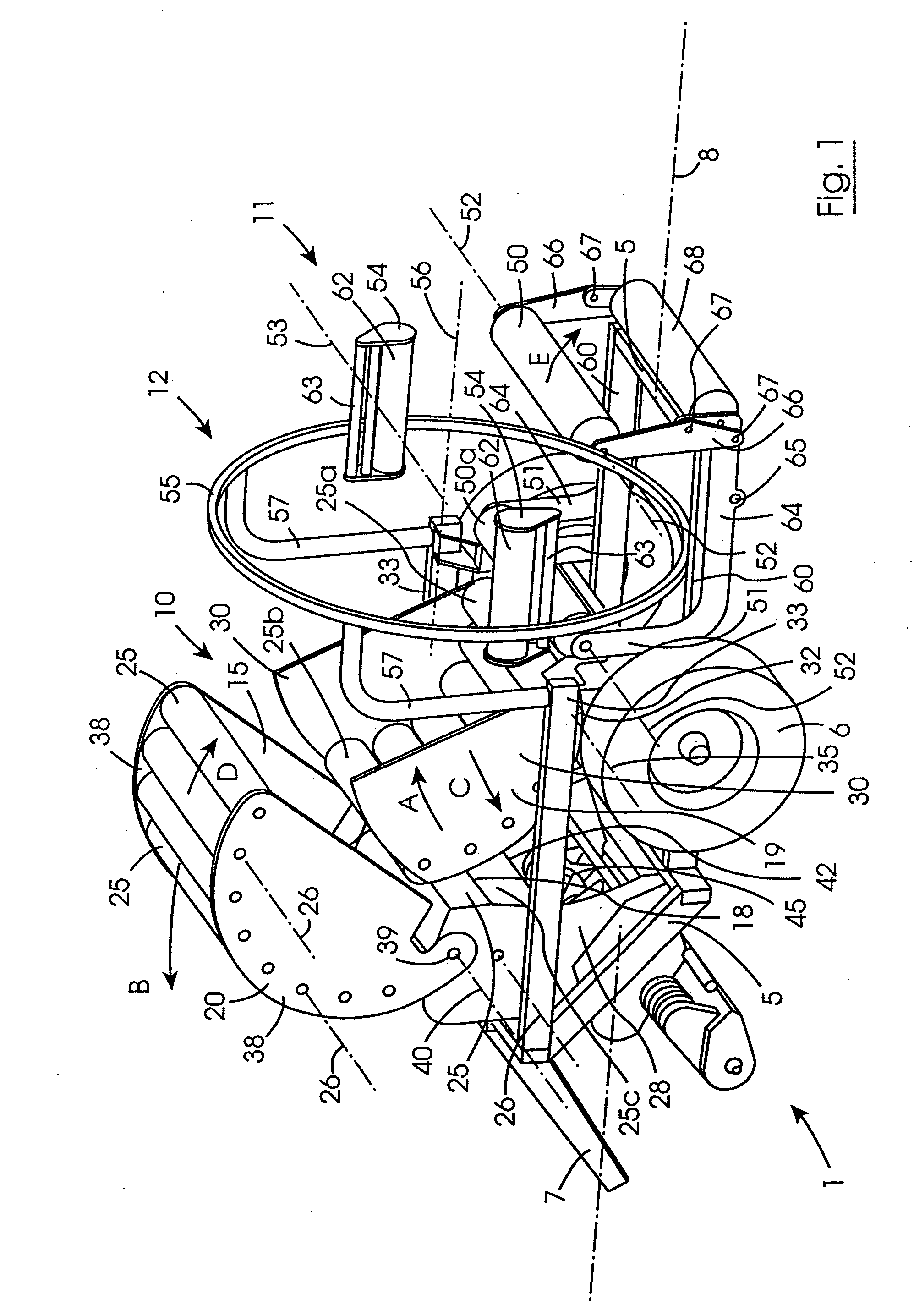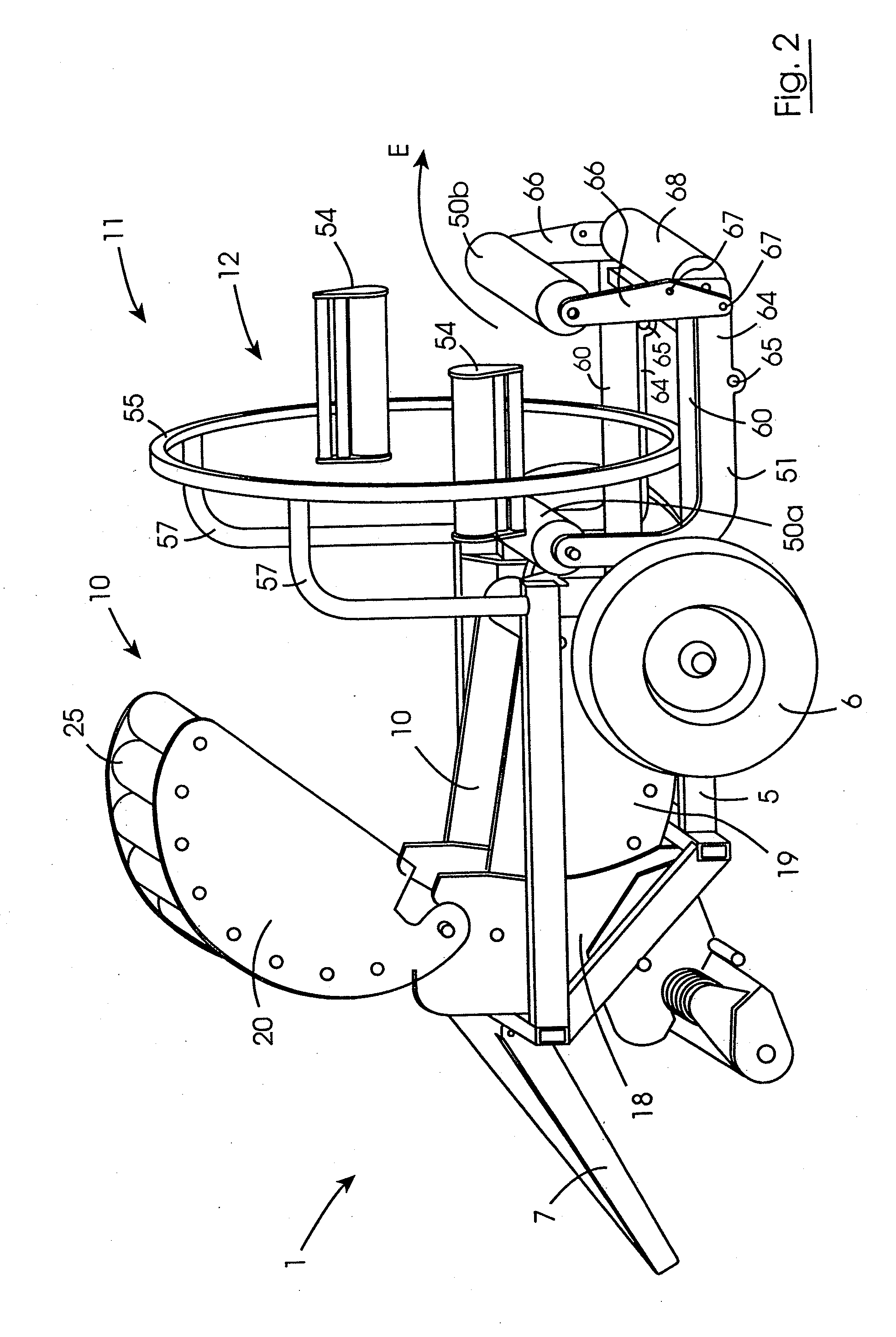Combined baler/bale wrapper
a baler/bale wrapper and baler technology, applied in the field of baler/bale wrapper, can solve the problems of slow and inefficient integration of baler/bale wrapper, unacceptably high overall height of such baler, and relatively cumbersome integral baler/bale wrapper, so as to achieve efficient and smooth transfer, efficient construction of baler/bale wrapper, and convenient use.
- Summary
- Abstract
- Description
- Claims
- Application Information
AI Technical Summary
Benefits of technology
Problems solved by technology
Method used
Image
Examples
Embodiment Construction
[0109]Referring to the drawings and initially to FIGS. 1 to 8 thereof there is illustrated a combined baler / bale wrapper according to the invention indicated generally by the reference numeral 1 for forming and wrapping a cylindrical bale of fodder material, typically, silage, the bale being of the type typically referred to as a round bale. In this embodiment of the invention the bale formed is of diameter approximately 1.25 metres and axial length of approximately 1.25 metres. A bale 2 is illustrated diagrammatically in FIGS. 3 to 6 being wrapped as will be described below. The baler / bale wrapper 1 is particularly suitable for towing behind a towing vehicle, such as, for example, a tractor, and is powered by the tractor, although the baler / bale wrapper could be self propelled and self powered. The baler / bale wrapper 1 comprises a chassis 5 which is carried on a pair of rotatably mounted ground engaging wheels 6. A framework 7 extending forwardly from the chassis 5 terminates in a ...
PUM
 Login to View More
Login to View More Abstract
Description
Claims
Application Information
 Login to View More
Login to View More - R&D
- Intellectual Property
- Life Sciences
- Materials
- Tech Scout
- Unparalleled Data Quality
- Higher Quality Content
- 60% Fewer Hallucinations
Browse by: Latest US Patents, China's latest patents, Technical Efficacy Thesaurus, Application Domain, Technology Topic, Popular Technical Reports.
© 2025 PatSnap. All rights reserved.Legal|Privacy policy|Modern Slavery Act Transparency Statement|Sitemap|About US| Contact US: help@patsnap.com



